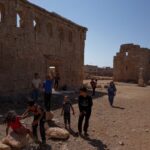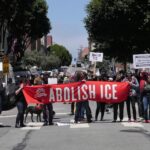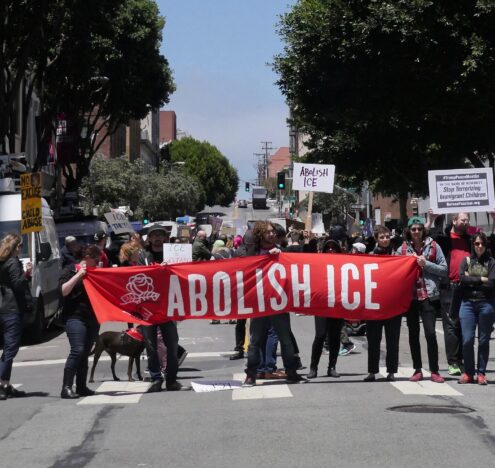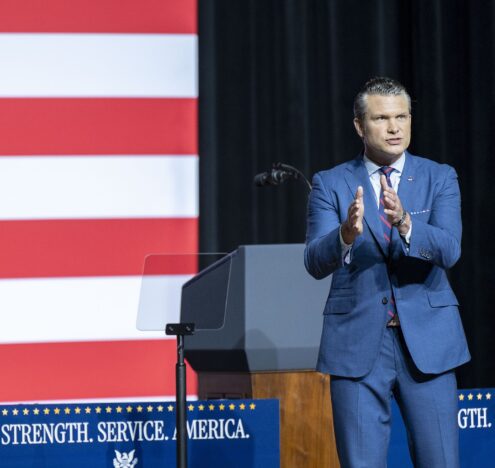The Capitol Hill Autonomous Zone (CHAZ) in Seattle collapsed July 1, ending as confusedly as it began. Because of the conflicting reporting that emerged from the Zone, its failure is widely seen as the inevitable result of the supposed anarchism of that community. But the reality is more complex: CHAZ failed because it lacked any centralized government, clear leadership, or a security force that could establish itself as the sole purveyor of legitimate force in its territory.
It is nothing new for nonstate actors to engage in governance and statebuilding projects. A sovereign state exercises a monopoly of power and control over a territory and people. But, sometimes, when the incumbent state is unable to meet the demands of a portion of its citizenry, non-state actors — nonviolent or otherwise — step in to fill the responsibilities of the social contract. Sometimes those nonstate actors are insurgencies or separatist movements, but other times, they constitute international nongovernmental organizations like Doctors Without Borders, which provides healthcare services in crisis zones.
Currently there are seven known permanent autonomous zones in the world: Rojova in Syria, Municipios Autónomos Rebeldes Zapatistas (MAREZ) in Mexico, Freetown Christiania in Denmark, Dreamtime Village in Wisconsin, Zone à Défendre (ZAD) in France, Black Bear Ranch in California, and Auroville in India. All of these zones to some degree have sovereignty over the territories they occupy, yet none of them have complete autonomy, and certainly lack a monopoly on violence in their space. The incumbent state, in all these zones, exercises its rights to conduct police raids, military interventions and incarcerations. For example, Freetown Christiania in Copenhagen functions as a semi-independent commune run by a foundation. Christiana was built on the premise of an egalitarian and non-capitalist societal structure. Even though these permanent autonomous zones practice degrees of population protection, they lack complete control over the definitional sense of violence within their zones and invite the larger state to assist them in issues of security. This means they cannot hope to operate as viable states.
Social movements, specifically “occupy” movements, are another phenomenon that more closely match CHAZ. The Occupy Wall Street movement and its international parallels formed as a reaction to economic inequality, specifically regarding income and government policies favoring large corporations over private citizens. Occupy is literally a social movement performed by occupying a space associated with the grievances (hence the first one on Wall Street). The Occupy movement is now replicated worldwide as a form of peaceful social protest, as citizens exercise their rights to inhabit public space. As we argue, even though CHAZ initially labeled itself as an autonomous zone, its trajectory was closer to that of a movement like Occupy, with the added grievances of racial inequalities against police and the political system.
CHAZ, also known as CHOP (Capitol Hill Occupy Protest, or Capitol Hill Organized Protest) began establishing its occupational zone on June 7, 2020, when the Seattle Police Department (SPD) abandoned its East Precinct. The protestors quickly established what was initially known as CHAZ between 12th Avenue and Pine Street. By taking over the immediate area covered by the East Precinct, CHAZ actualized a core tenet of its members’ ideology: the police, as they currently exist, are an abusive and unnecessary institution.
But CHAZ was hardly a cohesive, organized area. Indeed, the movement itself suffered a lack of clear leadership. Even its various online manifestations of legitimacy, as seen in its “official” website and subreddit, were contested and lacked a unified message. This was perhaps most apparent in the running debates over the zone’s official name; some ostensible leaders said the zone was not trying to secede or be autonomous from the United States (hence the name change), whereas the “official” website’s landing page simultaneously greeted visitors with the warning that “YOU ARE NOW LEAVING THE USA,” claiming that “[t]he attempt at a name change is an operation to detract and disorient,” but nevertheless “CHAZ is an occupation of Capitol Hill, not an official declaration of independence.”
… some ostensible leaders said the zone was not trying to secede or be autonomous from the United States (hence the name change), whereas the “official” website’s landing page simultaneously greeted visitors with the warning that “YOU ARE NOW LEAVING THE USA…”
This is not to say that members of CHAZ did not seek to establish some level of organization or structure. Indeed, they began drafting an abortive constitution of sorts on their subreddit that established a “Conflict Resolution Advisory Council,” though that constitution was removed shortly thereafter due to debates over its core tenets. Indeed, CHAZ’s structure was decentralized and hyperdemocratic, relying on large group meetings and breakout sessions to “further define the rules, policies, [and] laws of the zone” and to discuss strategies for negotiating with the city. While some rationalized the decentralized, leaderless structure as a means of avoiding the inherent dangers of centralized leadership — especially if those leaders were killed or arrested — others saw the lack of organization as a greater danger.
But if CHAZ lacked clear cohesion, the state itself was hardly a more unitary actor. On the one hand, for most of CHAZ’s existence, Seattle Mayor Jenny Durkan exhibited remarkable openness toward the Zone, defending it from accusations of terrorism, instead asserting that establishing such a zone was an act of patriotism. Indeed, she validated the Zone by visiting at least once, and engaged in negotiations with its representatives. In those talks, she agreed to invest at least $100 million USD into Seattle’s minority communities and create a community-based Black Commission. Although she walked back some of her dismissive remarks regarding the potential dangers of such a zone and asserted that routine policing would continue there, this was not the case. The Zone for the most part remained free of Seattle police. Given that CHAZ essentially usurped Mayor Durkan’s control over those six city blocks, her longstanding reaction to and support for the Zone contradicts the typical expectations of State responses to challenges by nonstate actors.
Conversely, Durkan and the Seattle Chief of Police, Carmen Best, publicly disagreed over CHAZ, with Best openly stating in a video that “leaving the precinct was not my decision… It seems like an insult to [the SPD] and our community… I’m angry about how this all came about.” The disagreements within the government were not limited to the local level, however; President Donald Trump publicly traded barbs with Washington State Governor Jay Inslee and Mayor Durkan, threatening to retake the precinct if they refused to do so, though they persisted in their refusal until recently, when Mayor Durkan announced that the SPD would retake the precinct because of a rash of shootings in the Zone. That promise was fulfilled in July.
These divisions on both the local and national levels reveal some of the challenges of federalism and principal-agent problems that plague even the most advanced states, demonstrating that the state is not a unitary actor. Perhaps, in light of the disorder of “the state” writ large, the lack of a clear organizational structure within CHAZ was not so surprising.
Despite the apparent lack of organized leadership, CHAZ fulfilled several statebuilding and governance functions, though it was not always clear who organized and coordinated these efforts. Such functions fell into two broad categories: the provision of public goods and the provision of security.
First, CHAZ furnished some public goods, just as a state would, including food, clothing, shelter, education, sanitation, and health services. Foodstuffs were made available to the “population” of CHAZ, free of charge, by several means. The bulk of food provision in the Zone relied on donations channeled through the aforementioned Decolonization Conversation Cafe, the “Riot Kitchen” tent, and the No-Cop Co-Op. Some local and national-level businesses also contributed to such efforts by distributing their food for free. Gardens “for black and indigenous folks and their plant allies” constituted another potential future source of food for the community, but this future obviously never materialized. The Zone also contained a tent for donating and taking clothes, a “Zines & Supplies table,” and an “Anti-Racist Library.” Regular talks, concerts, documentary screenings, and the like also served to educate the CHAZ/CHOP residents.
Health services are a critical component of any human community, and CHAZ was no exception. The Zone featured medical services including the Health Justice Space, the Rejuvenation Station, and the People’s Community Clinic. Additionally, residents of CHAZ were largely conscious of the ongoing COVID-19 pandemic that hung over the protests. This was clearly seen in signs claiming that “Social Distancing is Anti-Racism,” as well as the Zone’s handwashing station. Other sanitation efforts included organized trash and recycling collection and portapotty cleaning.
Second, providing security to residents is another critical state role, and it was, unsurprisingly, an important function in CHAZ, despite its lack of centralized authority. Although the Zone attempted to fulfill Weber’s conception of the state as a “human community that (successfully) claims the monopoly of the legitimate use of physical force within a given territory,” it never firmly established such a monopoly.
On June 15, a civilian from the Zone broke into and started a fire in an automotive shop. The owners of the shop had to respond to the arson themselves because the SPD was not allowed into CHAZ/CHOP, except in “mass-casualty event[s].” A group from the Zone came and broke down the shop’s gate to free the perpetrator from the owners, he was questioned by CHAZ security and shop owners upon returning to the Zone. He was later arrested by the King’s County Sheriff’s office for a different crime. Conversely, a CHAZ sentinel worked to help the owners of an LGBTQ community center, Gay City, after it was vandalized.
So although the Zone’s security forces seemingly worked to protect businesses from property crime and the like, they lacked the capacity to do this in a systematic manner. This lack of organized leadership and security — the absence of a monopoly on the use of force — led other nonstate actors to take advantage of the power vacuum. For example, after learning of the break-in at an auto shop, a private security firm volunteered to protect the business, similar to mercenary responses in war zones. Additionally, the Puget Sound John Brown Gun Club (PSJBGC) worked to supplement the CHAZ security forces by providing some security, enforcing gun safety, and protecting protestors from malign actors.
But there were other ways in which CHAZ more effectively worked to claim the monopoly on the use of force. First, by denying the Seattle Police Department access to their territory, CHAZ security and residents made clear their rejection of the incumbent state. This was further demonstrated by their repurposing of the East Precinct as a community center. Additionally, they installed barriers in the streets to prevent vehicular attacks, which have been used to target other recent protests, and established security checkpoints on the Zone’s “borders,” where they loosely controlled ingress. Several members of CHAZ security carried firearms, whether openly or concealed.
Despite these efforts to seize the monopoly on violence, CHAZ security was not well organized, and was not composed of a single group, as seen in the other actors’ involvement in the Zone. The first identified “leader” of CHAZ security, Raz Simone, is a Seattle-based recording artist who was instantly vilified as a “warlord” and a “monarch” by conservative media outlets. Although initial reports that CHAZ security operated like a mafia and extorted local businesses and residents have since been disconfirmed by the Seattle Police, Simone himself does seem to have assaulted a citizen-journalist and a vandal. Taken with their mixed record in protecting businesses, it is clear that CHAZ security was not so effective at internal policing as desired.
While part of the security personnel’s raison d’etre was, in theory, to protect the Zone from the police, they neither engaged the SPD in combat nor militarized the Zone. Rather, their primary purpose was to keep order within CHAZ, and especially to defend against other non-state actors. These include right-wing groups like the Proud Boys, who entered the Zone several times and even attacked protestors just outside its borders. CHAZ residents also conducted even less formal policing against ANTIFA and other malcontents who could have undermined the protests through violent and destructive acts.
But attempts to secure the Zone met with challenges in its final weeks. A string of shootings in CHAZ, beginning in the early morning of June 20, resulted in at least eight injured persons and two fatalities. The early shootings elicited several letters of concern from various groups of CHAZ protestors, including Seattle Organized Protest Support (SOPS) and Voices of CHOP (the latter’s Twitter account has since been suspended), recommending changes in the Zone’s operations for the sake of safety, including a curfew.
Indeed, the rash of violence in CHAZ prompted something of an exodus shortly before the Zone was formally shut down. For example, according to a June 24 tweet (from a now-suspended account) signed by the Capitol Hill Occupied Protest Solidarity Committee, “few people remain in our beloved CHOP.” But it was not just the bloodshed that facilitated the dwindling of the Zone’s population; Mayor Durkan’s declaration that the police would reclaim the East Precinct at some undisclosed time in the future also contributed. Finally, on Wednesday, the Seattle Police Department cleared the Zone, ending its existence of less than a month, due to the most recent shooting in the Zone the night before.
So the CHAZ experiment ended in failure. But why? We argue that the answer is twofold: the failure to establish a centralized vertical hierarchy government and the inability to fully seize the monopoly on violence.
Although the Zone engaged in governance and in negotiations with the state, it lacked a unified government or defined leadership structure, instead opting for a horizontal organizational scheme. Such structures are notoriously vulnerable and ineffective, as Craig Whiteside demonstrates in his study of insurgent organization. The hyperdemocratization of the Zone was not accepted by all of its residents, as some pushed for a concrete leadership structure, but efforts to establish such structures ultimately came to naught. Indeed, given that CHAZ residents remained split over what to even call the Zone, one wonders whether there was any real possibility of such a government forming.
The failure to properly secure the Zone proceeded in large part from its lack of a centralized government structure. But this inadequate securitization occurred at several levels: first, there was a serious lack of organization within CHAZ security, which was seemingly split between several groups that were not always on the same page. Second, that lack of cohesion contributed to — but was not solely responsible for — the security forces’ failure to adequately police the Zone itself, whether against external agitators like the Proud Boys and ANTIFA or internal troublemakers like the vandals who attacked Car Tender. This failure became even clearer with the string of shootings that rocked the Zone and killed several of its inhabitants, which shook CHAZ residents’ confidence in the security forces’ ability to protect them. Finally, if CHAZ security could not properly exercise the monopoly on the use of force against nonstate actors, it had no chance of preventing the Seattle Police Department from retaking the area. The latest shooting, seemingly carried out by CHAZ security, pushed the city government over the edge and prompted it to retake the area because it was clear that CHAZ security personnel could not sufficiently protect the Zone’s inhabitants.
Given that no movement of disparate groups can hold territory for long without creating a centralized government system or the ability to police and protect its population, it is unsurprising that CHAZ was unable to last.
Benjamin V. Allison (@BenVAllison) is a PhD student at the University of Texas at Austin. He specializes in the history of US foreign and national security policy, especially toward the Middle East and Russia. He is the lead author of a forthcoming book on violence in jihadist insurgencies.
Ayse D. Lokmanoglu (@aysed_9) is a Presidential Fellow and a PhD candidate in the Transcultural Conflict and Violence Initiative at Georgia State University. She focuses on state-building, sovereignty and monetary economics of nonstate actors in the Middle East that challenge international organizations.




















